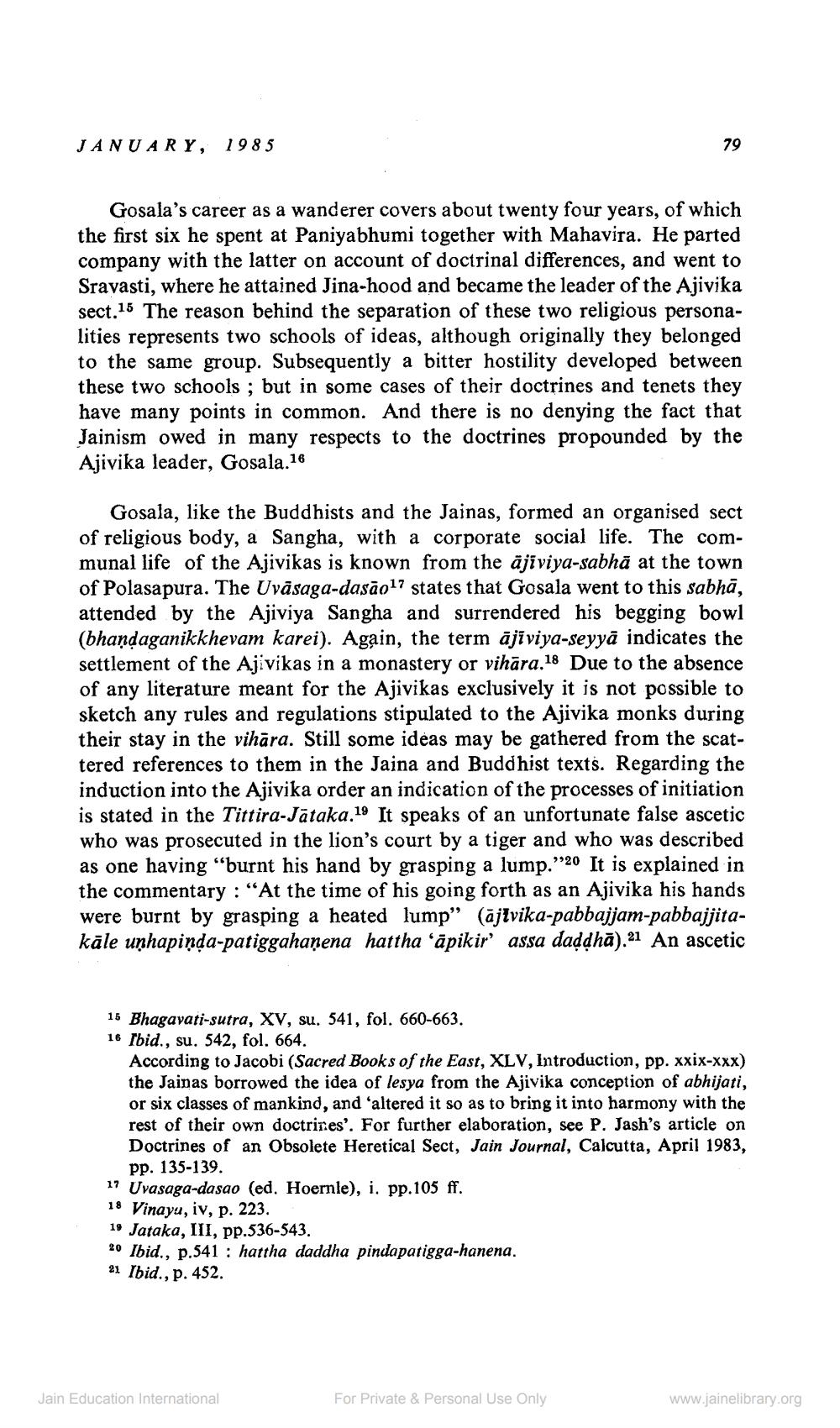________________
JANUARY, 1985
Gosala's career as a wanderer covers about twenty four years, of which the first six he spent at Paniyabhumi together with Mahavira. He parted company with the latter on account of doctrinal differences, and went to Sravasti, where he attained Jina-hood and became the leader of the Ajivika sect.15 The reason behind the separation of these two religious personalities represents two schools of ideas, although originally they belonged to the same group. Subsequently a bitter hostility developed between these two schools ; but in some cases of their doctrines and tenets they have many points in common. And there is no denying the fact that Jainism owed in many respects to the doctrines propounded by the Ajivika leader, Gosala. 16
Gosala, like the Buddhists and the Jainas, formed an organised sect of religious body, a Sangha, with a corporate social life. The communal life of the Ajivikas is known from the äjiviya-sabhā at the town of Polasapura. The Uvāsaga-dasão17 states that Gosala went to this sabhā, attended by the Ajiviya Sangha and surrendered his begging bowl (bhaņdaganikkhevam karei). Again, the term ājīviya-seyyā indicates the settlement of the Ajivikas in a monastery or vihāra.18 Due to the absence of any literature meant for the Ajivikas exclusively it is not possible to sketch any rules and regulations stipulated to the Ajivika monks during their stay in the vihāra. Still some ideas may be gathered from the scattered references to them in the Jaina and Buddhist texts. Regarding the induction into the Ajivika order an indication of the processes of initiation is stated in the Tittira-Jätaka.19 It speaks of an unfortunate false ascetic who was prosecuted in the lion's court by a tiger and who was described as one having "burnt his hand by grasping a lump."20 It is explained in the commentary : “At the time of his going forth as an Ajivika his hands were burnt by grasping a heated lump” (ājlvika-pabbajjam-pabbajjitakāle unhapinda-patiggahaņena hattha 'āpikir’assa daddhā).21 An ascetic
15 Bhagavati-sutra, XV, su. 541, fol. 660-663. 16 Ibid., su. 542, fol. 664.
According to Jacobi (Sacred Books of the East, XLV, Introduction, pp. xxix-xxx) the Jainas borrowed the idea of lesya from the Ajivika conception of abhijati, or six classes of mankind, and 'altered it so as to bring it into harmony with the rest of their own doctrines'. For further elaboration, see P. Jash's article on Doctrines of an Obsolete Heretical Sect, Jain Journal, Calcutta, April 1983,
pp. 135-139. 17 Uvasaga-dasao (ed. Hoernle), i. pp.105 ff. 18 Vinaya, iv, p. 223. 19 Jataka, III, pp.536-543. 20 Ibid., p.541 : hattha daddha pindaparigga-hanena. 21 Ibid., p. 452.
Jain Education International
For Private & Personal Use Only
www.jainelibrary.org




